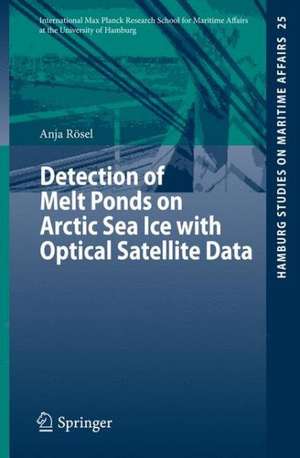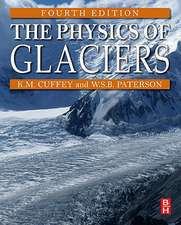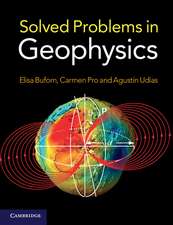Detection of Melt Ponds on Arctic Sea Ice with Optical Satellite Data: Hamburg Studies on Maritime Affairs, cartea 25
Autor Anja Röselen Limba Engleză Paperback – 19 iun 2013
Din seria Hamburg Studies on Maritime Affairs
- 15%
 Preț: 648.24 lei
Preț: 648.24 lei - 18%
 Preț: 939.94 lei
Preț: 939.94 lei - 15%
 Preț: 642.18 lei
Preț: 642.18 lei - 18%
 Preț: 1111.85 lei
Preț: 1111.85 lei - 18%
 Preț: 949.42 lei
Preț: 949.42 lei -
 Preț: 386.81 lei
Preț: 386.81 lei - 15%
 Preț: 700.42 lei
Preț: 700.42 lei - 15%
 Preț: 631.07 lei
Preț: 631.07 lei - 15%
 Preț: 643.34 lei
Preț: 643.34 lei -
 Preț: 378.12 lei
Preț: 378.12 lei - 18%
 Preț: 944.82 lei
Preț: 944.82 lei - 18%
 Preț: 719.59 lei
Preț: 719.59 lei - 15%
 Preț: 639.73 lei
Preț: 639.73 lei - 15%
 Preț: 588.04 lei
Preț: 588.04 lei - 15%
 Preț: 699.12 lei
Preț: 699.12 lei -
 Preț: 383.71 lei
Preț: 383.71 lei - 18%
 Preț: 946.24 lei
Preț: 946.24 lei - 15%
 Preț: 640.06 lei
Preț: 640.06 lei - 15%
 Preț: 639.08 lei
Preț: 639.08 lei -
 Preț: 389.11 lei
Preț: 389.11 lei - 15%
 Preț: 645.28 lei
Preț: 645.28 lei - 15%
 Preț: 538.44 lei
Preț: 538.44 lei - 15%
 Preț: 638.89 lei
Preț: 638.89 lei -
 Preț: 381.98 lei
Preț: 381.98 lei - 18%
 Preț: 733.96 lei
Preț: 733.96 lei -
 Preț: 382.36 lei
Preț: 382.36 lei - 18%
 Preț: 728.91 lei
Preț: 728.91 lei - 15%
 Preț: 649.22 lei
Preț: 649.22 lei - 18%
 Preț: 944.99 lei
Preț: 944.99 lei - 18%
 Preț: 943.43 lei
Preț: 943.43 lei - 15%
 Preț: 526.18 lei
Preț: 526.18 lei - 15%
 Preț: 633.35 lei
Preț: 633.35 lei - 15%
 Preț: 636.45 lei
Preț: 636.45 lei - 18%
 Preț: 1005.74 lei
Preț: 1005.74 lei
Preț: 632.70 lei
Preț vechi: 744.35 lei
-15% Nou
Puncte Express: 949
Preț estimativ în valută:
121.08€ • 125.95$ • 99.96£
121.08€ • 125.95$ • 99.96£
Carte tipărită la comandă
Livrare economică 14-28 aprilie
Preluare comenzi: 021 569.72.76
Specificații
ISBN-13: 9783642370328
ISBN-10: 3642370322
Pagini: 130
Ilustrații: XVI, 106 p. 45 illus., 35 illus. in color.
Dimensiuni: 155 x 235 x 12 mm
Greutate: 0.2 kg
Ediția:2013
Editura: Springer Berlin, Heidelberg
Colecția Springer
Seria Hamburg Studies on Maritime Affairs
Locul publicării:Berlin, Heidelberg, Germany
ISBN-10: 3642370322
Pagini: 130
Ilustrații: XVI, 106 p. 45 illus., 35 illus. in color.
Dimensiuni: 155 x 235 x 12 mm
Greutate: 0.2 kg
Ediția:2013
Editura: Springer Berlin, Heidelberg
Colecția Springer
Seria Hamburg Studies on Maritime Affairs
Locul publicării:Berlin, Heidelberg, Germany
Public țintă
ResearchCuprins
Introduction.- Physical characteristics of sea ice.- Optical Remote Sensing.- Melt pond determination from Landsat satellite data.- Melt pond determination from MODIS data.- Summary and outlook.- Glossary.
Textul de pe ultima copertă
The Arctic sea ice is characterized by profound changes caused by surface melting processes and the formation of melt ponds in summer. Melt ponds contribute to the ice-albedo feedback as they reduce the surface albedo of sea ice, and hence accelerate the decay of Arctic sea ice. To quantify the melting of the entire Arctic sea ice, satellite based observations are necessary. Due to different spectral properties of snow, ice, and water, theoretically, multi-spectral optical sensors are necessary for the analysis of these distinct surface types. This study demonstrates the potential of optical sensors to detect melt ponds on Arctic sea ice. For the first time, an Arctic-wide, multi-annual melt pond data set for the years 2000-2011 has been created and analyzed.
Caracteristici
Provides the first Arctic-wide multi-annual data set of melt pond fraction Melt ponds are retrieved from satellite observations Provides the method of calculation of the melt pond fraction from optical satellite data
















